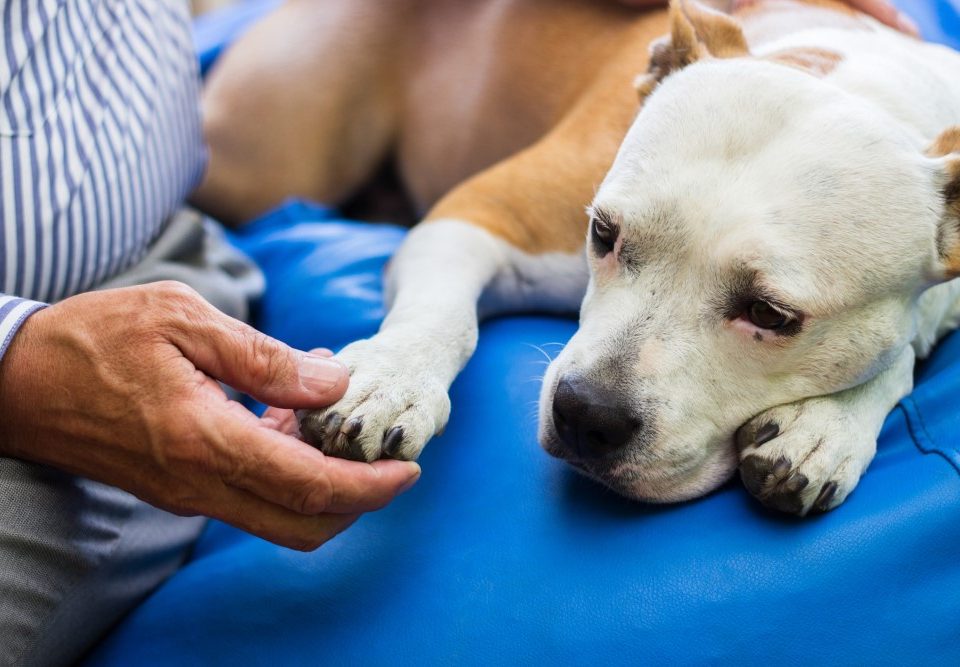
What To Ask Before Deciding On Cat Euthanasia
February 15, 2021
Reasons to Put Your Dog Down Compassionately
March 16, 2021There is nobody better placed to understand your dog’s health than you, but how to tell if your dog is in pain? It may be quite challenging to determine the level of discomfort your pet is experiencing, as they may well conceal with other behaviour. Read on to discover how to tell if your dog is in pain.
Watch Out For Mobility Issues
If your dog has mobility issues, it could be a sign of pain. You may notice them limping when you are taking them for a walk. Or, they may struggle to climb the stairs or have problems jumping in or out of the car. A change of posture can also be an indication that your dog is in pain.
Excessive Self-Grooming
If you notice your dog spending an excessive amount of time self-grooming, it could be a sign of pain. Your dog will instinctively know that a painful spot should be kept clean. Also, the act of licking the painful area might be providing your pet with some relief. If your dog is experiencing pain in their eyes, it may first click its paws and then run the eyes.
Changes In Behaviour
Dogs will not wake up one day and suddenly decide on a change of lifestyle; they are very much creatures of habit. Therefore, if you notice a sudden change in your dog’s behaviour you should be concerned about what has caused it. Your dog may become aggressive, or moody, or make unusual sounds. These are likely just to be your dog trying to protect itself due the pain it is experiencing.
Loss of Appetite
You may be able to tell if your dog is in by its loss of appetite. If they are experiencing excessive pain, then it may be enough to put your dog off its food.
Altered Breath Can Be A Telling Sign That Your Dog Is In Pain
If you notice your dog panting excessively, particularly in cool weather, it could be an indication that they are in pain. When they breathe they might experience pain when their lungs stretch, so be wary of fast or shallow breathing in your dog.
What Causes Your Dog To Be In Pain?
Unlike humans, dogs tend to hide their pain from view. When you notice any of the signs detailed above, you should try to investigate what the cause of the pain might be. Your dog might experience pain for various reasons, including the following:
- Accidents
- Arthritis
- Degenerative diseases
- Dental issues
- Infections
- Injuries
- Parasites
Relieving Your Dog’s Pain
Having discovered that your dog is in pain and tried to comfort them as much as possible, your first action should be to contact your vet. They may prescribe a series of drugs or anti-inflammatories to relieve your dog’s pain. There are also many natural remedies available to help pain relief, and alternative therapies including massage, acupuncture, and chiropractic techniques.
Conclusion
How to tell if your dog is in pain should not be difficult if you are paying attention to them. Hopefully, following the guidance above will help you recognise their pain quicker and avoid them suffering too long. If you need any further information on reducing pain and suffering for your dog, please get in touch with us.




